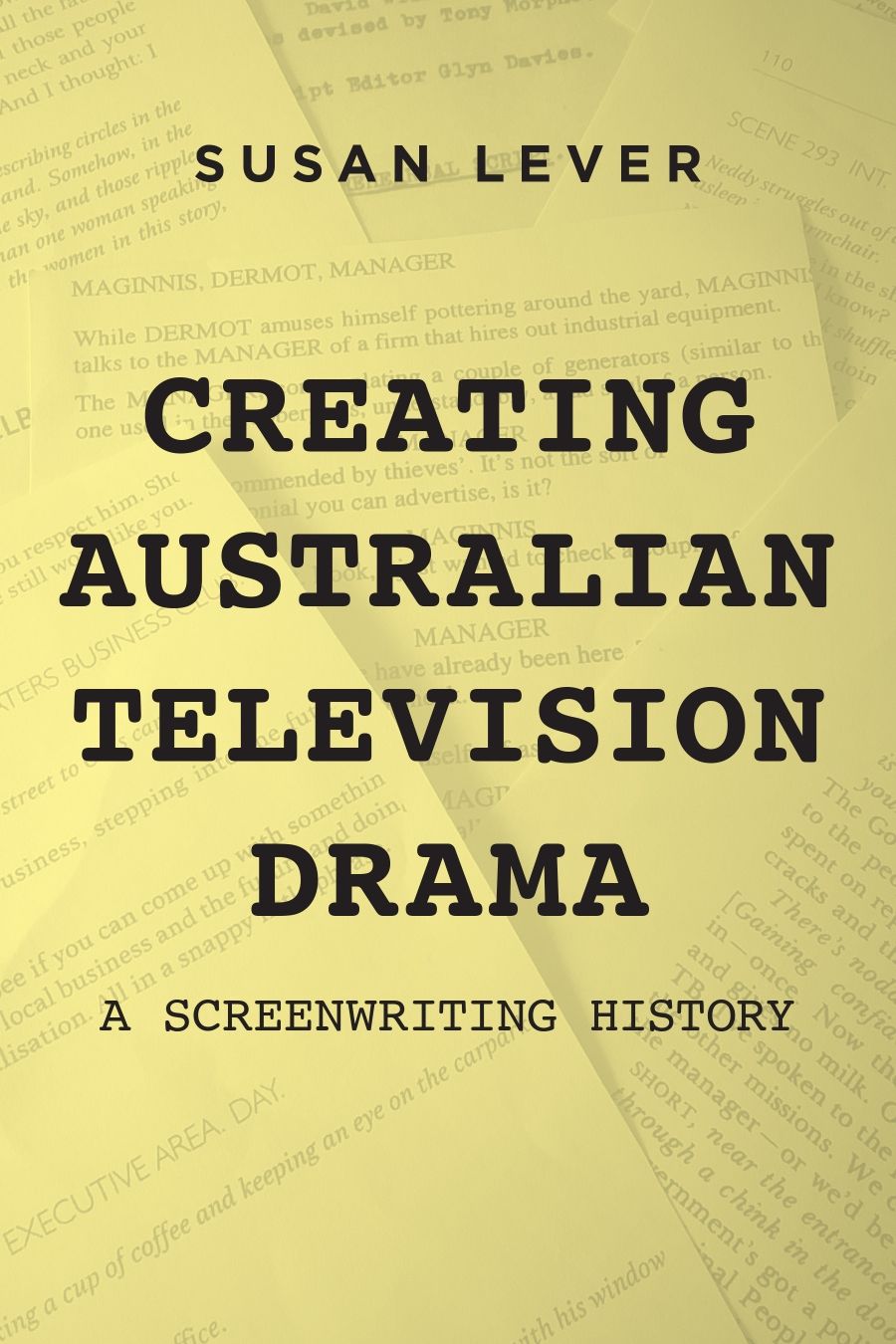
- Free Article: No
- Review Article: Yes
- Custom Highlight Text:
‘It is necessary in each situation,’ Jacques Derrida stated in 2007, in one of many instances of writing on writing, ‘to create an appropriate mode of exposition … to take into account the presumed or desired addressee.’ This was the phenomenon I sought while reading Susan Lever’s book on screenwriting for Australian television drama.
- Grid Image (300px * 250px):

- Book 1 Title: Creating Australian Television Drama
- Book 1 Subtitle: A screenwriting history
- Book 1 Biblio: Australian Scholarly Publishing, $39.95 pb, 290 pp
This book is revelatory, even for a nostalgia buff. I rediscovered Something in the Air (2000–2) and reconsidered, with pathos, Women of the Sun (1981), ‘the first real achievement of Aboriginal television drama’, the medium which had ‘a more important role than film in changing the popular representation of Aboriginal people’. But Women of the Sun, despite its success (‘hailed as a “watershed” … and taught in schools’), did not lead to a continuing stream of Indigenous television drama, because of yet another downturn in ABC funding. As a result of Aboriginal activism, that renaissance came decades later with series like The Gods of Wheat Street (2014).
The book thus brings to attention facets of culture, history, and the production process. For instance, Hector Crawford, during production of Homicide (1964–77), allowed his writers to work from home, when Crawford was a mid-twentieth-century producer, long before early twenty-first-century Covid–19 work-from-home practices. Further, Lever notes that Grundy’s Prisoner (1979–86) achieved, in 1979, ‘the unimaginable’ feat: the first Australian television show to be sold to an American network.
Lever is a major figure in Australian literary scholarship. She is a life member of the Association for the Study of Australian Literature, general editor of the Cambria Australian Literature Series, editor of The Oxford Book of Australian Women’s Verse (1995), and more. The reader can be confident of being in a pair of assured scholarly hands.
From the outset, I was interested in television drama’s present manifestation as ‘streaming’ series. Lever cites a couple of writers who consider dramas such as The Wire ‘the pinnacle of contemporary fictional narrative’, comparable to a great national novel. Lever notes that ‘several Australian productions’, such as the comedy Please Like Me (2013–16), ‘have had international exposure on the streaming platforms’. But Australian television dramatists’ full participation in future streaming long-form drama is uncertain because of high budgets for which Australian writers and producers will ‘need support’.
The book’s primary concern is ‘the writers’ role in creating Australian television drama’, with the script central to the creation of that drama as ‘a serious literary phenomenon’. Lever’s robust opening statement in the Introduction is that ‘television drama became the pre-eminent form of fiction-making within a few years of the commencement of broadcasting … [shaping] the imagination and dreams of millions of people’.
The writer’s script has been neglected. Media as a new academic discipline wanted to distinguish itself from literary studies’ emphasis on the writer as creator, television production being collaborative. Many might name Aaron Sorkin as the onlie begetter of The West Wing, whereas in reality he is known as the showrunner, ‘more like a producer’, with a long list of writers to hand (though he did co-write eighty-nine episodes). How many of us could put together a list of Australian television writers as long as those we might have for Australian film directors or novelists? Lever describes this as ‘a wholesale critical neglect of an area of textual creation’. There is no Australian ‘television drama canon’ like that of novels, theatre, and film.
Part of Lever’s remit in the book is a comparative study between the media of radio, theatre, film and television, and between British, American, and Australian cultural aesthetics. Of the latter, Lever writes that ‘after years of watching recycled material from Britain and America, Australian audiences learnt to love the simplicities and straightforwardness’ of Homicide.
The chapters follow chronologically Australian television writers’ origins in radio, theatre, and film, through various television genres such as crime and comedy, to the rise of Indigenous television-making, while also covering the business models of television production – writers forming a guild and production companies such as Simpson Le Mesurier creating Halifax f.p. (1994 –2002).
The book’s uninspiring cover does the inappropriate work of pre-programming the reader as an academic in a narrowly defined disciplinary space. Such a cover ill serves the lively and insightful mode of the book’s exposition. Fortunately, the endorsements point to the richness of the text between its dissimulating covers: its meticulous research and engaging writing style.
Paratextual material is perhaps an odd thing to highlight in the digital age and in a discussion of a book about the screen. EBooks, for example, often lack contextualising paratexts. But if it goes into another print run, the book deserves a more inviting cover. It is a valuable book for Australian identity, for the history of Australian creatives in the television industry, for the affordances new technologies give to culture, for its concern with local content, and for its recognition of scholars who work at knowledge creation.
Australian television drama is genre diverse. Among the scriptwriters, names recur, but they represent Australia’s ethnic, gender, and sexual diversity, including Jon Bell, Nick Giannopoulos, Celia Pacquola, Debra Oswald, Josh Thomas, and Hannah Gadsby. There is a jouissance to be experienced in this book via its celebration of the making of oneself through the creative and cultural resources of place.


Comments powered by CComment